BEFORE
Up until the mid 1800s the art world was dominated by realistic paintings and sculptures creating a series of influential movements:
Renaissance, Baroque, Rococo, Neoclassicism, Romanticism and Realism.
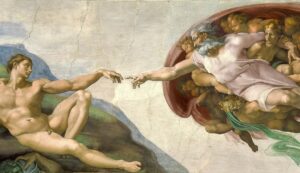
Renaissance: Michelangelo, The Creation of Adam, 1510
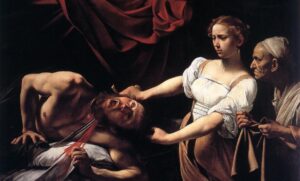
Baroque: Caravaggio, Judith Beheading Holofernes, ca. 1599
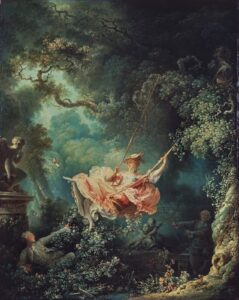
Rococo: Honoré Fragonard, Les heureux hasards de l’Escarpolette, 1766-1769
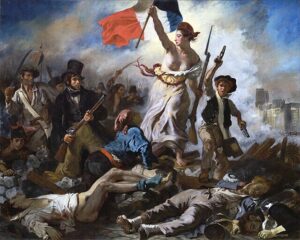
Neoclassicism: Eugène Delacroix, Liberty Leading the People, 1830
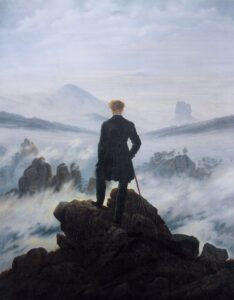
Romanticism: Caspar David Friedrich, Wanderer above the Sea of Fog, c. 1817
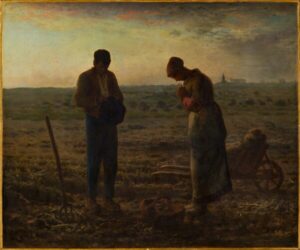
Realism: Jean-François Millet, L’Angélus, c. 1858
MODERNISM
Modernism in ART is defined as “a global movement in society and culture that from the early decades of the twentieth century sought a new alignment with the experience and values of modern industrial life. Building on late nineteenth-century precedents, artists around the world used new imagery, materials and techniques to create artworks that they felt better reflected the realities and hopes of modern societies.” Tate
Some examples in chronological order include:
Impressionism, Post-Impressionism, Fauvism, Expressionism, Cubism, Dada, Surrealism, Abstract Expressionism, Pop Art, Minimalism, and De Stijl
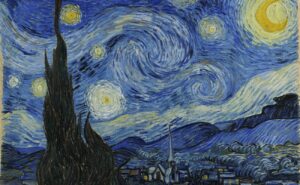
Impressionism: Vincent Van Gogh, Starry Night, 1889
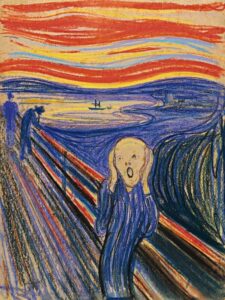
Post-Impressionism/Expressionism: Edvard Munch, The Scream, 1893
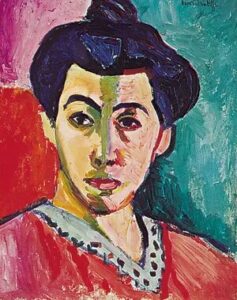
Fauvism: Henri Matisse, The Green Line, 1905
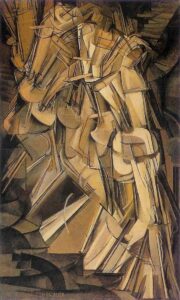
Cubism: Marcel Duchamp, Nude descending a staircase, 1912
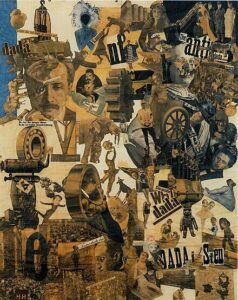
Dada: Hannah Höch, Cut with the Kitchen Knife through the Last Epoch of Weimar Beer-Belly Culture in Germany, 1919
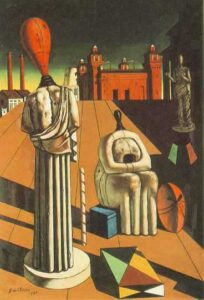
Surrealism: Girogio de Chirico, The Disquieting Muses, c. 1917
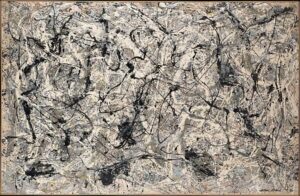
Abstract Expressionism: Jackson Pollock, Number 28, 1950
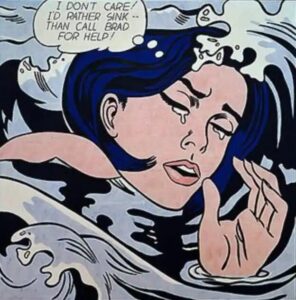
Pop Art: Roy Lichtenstein, Drowning Girl, 1963

Minimalism: Robert Morris, Untitled, 1965
POSTMODERNISM
“Postmodernism can be seen as a reaction against the ideas and values of modernism, as well as a description of the period that followed modernism’s dominance in cultural theory and practice in the early and middle decades of the twentieth century. The term is associated with scepticism, irony and philosophical critiques of the concepts of universal truths and objective reality.” Tate
Postmodernism in Art History
Postmodernism is a broad movement that emerged in the mid-to-late 20th century as a reaction against the ideas and values of modernism. It is characterized by skepticism toward grand narratives, objective truths, and universalist ideas promoted by modernist art and culture. In art, postmodernism embraces ambiguity, diversity, and contradiction, often rejecting the notion of progress or purity in artistic expression.
Key features of postmodern art include:
- Pastiche: The use of styles and motifs from different historical periods or cultural contexts.
- Appropriation: Borrowing or reusing existing images, ideas, or objects in new contexts, often challenging notions of originality and authorship.
- Irony and Parody: Critiquing cultural norms and artistic conventions through humor or subversion.
- Fragmentation: Emphasizing disjointed forms, incomplete narratives, and discontinuity.
- Hyperreality: Blurring the distinction between reality and simulation, influenced by media and consumer culture.
- Plurality: Celebrating multiple perspectives and the coexistence of various artistic styles.
The Postmodern Crisis in Art History
The “postmodern crisis” refers to a period of uncertainty and tension in art history caused by the breakdown of traditional frameworks used to understand and classify art. During this crisis, long-held assumptions about the purpose of art, the role of the artist, and the criteria for evaluating artistic quality were questioned.
This crisis can be summarized in several key challenges:
- Loss of Authority: Traditional institutions like museums and academia faced challenges to their authority in defining what counts as “high” or “important” art.
- Critique of the Canon: The established Western canon of “great” works of art was scrutinized for being exclusionary and biased toward certain cultures, genders, and classes.
- End of Metanarratives: Postmodernism rejected overarching narratives in art history, such as the notion of linear progress or the idea that art serves a universal human purpose.
- Cultural Relativism: With the rise of global and multicultural perspectives, postmodern art history recognized that no single interpretation or standard can dominate artistic discourse.
- Commercialization and Commodification: The increasing influence of media and consumer culture on art led to concerns about art losing its critical, autonomous status.
In essence, the postmodern crisis in art history is about grappling with a world where art no longer fits neatly into pre-existing categories, where meaning is often unstable, and where traditional hierarchies and narratives are constantly challenged.
Some influential sources that typically inform definitions of postmodernism and the postmodern crisis in art history include:
- Jean-François Lyotard – The Postmodern Condition: A Report on Knowledge (1979)
- Lyotard introduced the idea of the “incredulity toward metanarratives,” which is central to postmodern thought.
- Fredric Jameson – Postmodernism, or, The Cultural Logic of Late Capitalism (1991)
- Jameson explores the relationship between postmodern culture, late capitalism, and the commodification of art.
- Linda Hutcheon – A Poetics of Postmodernism (1988)
- Hutcheon emphasizes the use of irony, parody, and pastiche in postmodern art and literature.
- Hal Foster – The Anti-Aesthetic: Essays on Postmodern Culture (1983)
- A collection of essays discussing postmodernism in various artistic and cultural contexts, edited by Foster.
- Rosalind Krauss – Various essays in October journal
- Krauss wrote extensively on postmodern art, especially concerning media, appropriation, and the critique of originality.
EXAMPLES OF POSTMODERNISM

Marina Abramovic, Rhythm Zero, 1974

David Hall, This is a television receiver, 1976

Jeff Koons: Three Ball Total Equilibrium Tank, 1985

Damien Hirst, Away form the flock, 1994

Maria Fernanda Cardoso, Sea Horses, 1994-2003
POSTMODERN CRISIS
“There is nothing new under the sun” is a phrase from the Bible (Ecclesiastes 1:9) that can be interpreted as a key concept in postmodernism, reflecting a core crisis of the movement by suggesting that all ideas, experiences, and narratives are essentially repetitions of what has already existed, thus undermining the notion of originality and progress that are often associated with modern thought. It also implies that all current societal issues, conflicts, and ideas are essentially recycled versions of past events, suggesting a sense of futility and a lack of genuine progress in the face of repeating historical patterns.
Explanation:
- Rejection of grand narratives:Postmodernism critiques the idea of a single, overarching truth or narrative, and the phrase “nothing new under the sun” reinforces this by implying that there is no new knowledge to be discovered, only re-interpretations of the old.
- Skepticism towards progress:By suggesting that history is cyclical and nothing truly new emerges, the phrase challenges the Enlightenment belief in continuous human progress.
- Deconstruction of meaning:Postmodernism often deconstructs established meanings, and this phrase can be used to deconstruct the idea of novelty or innovation, suggesting that everything is ultimately a rehash of the past.